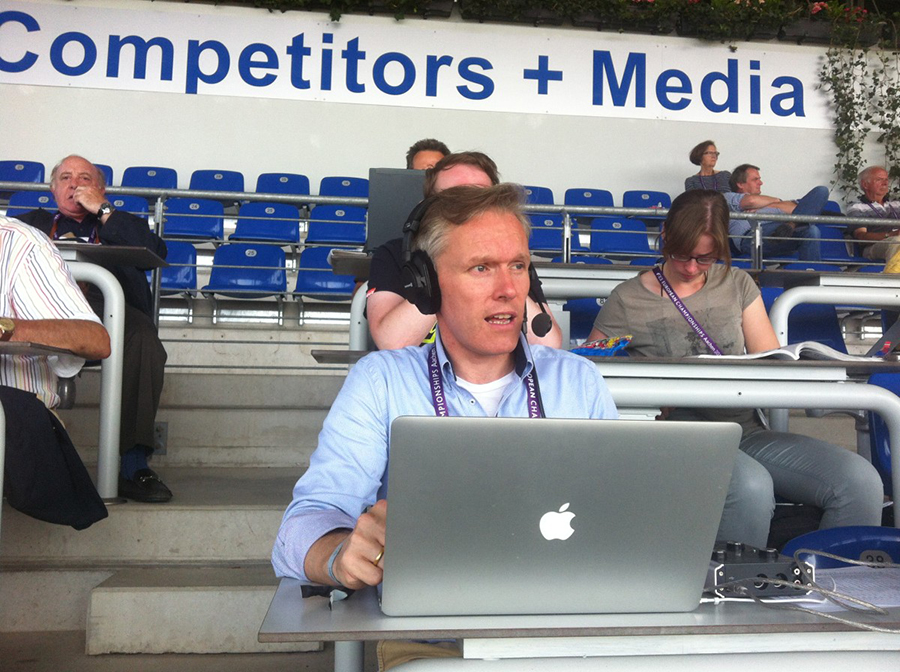
THM editor Christopher Hector talks to St Georg editor, Jan Tönjes, here’s Jan in action in the Press Seats…
Journalists interviewing journalists can look a bit dodgy, but the truth is, some of the most acute observers of the scene, are sitting at the press desks, and with Jan Tönjes sitting just down the desk from me at Aachen, the temptation was too strong to resist.
Jan is well qualified. A serious rider as a young man, he worked with the Oldenburg Verband, before joining the editorial team at St Georg Magazine in 2003. He became the editor of the magazine in the autumn of 2012. Jan is also in great demand as a commentator at breed shows, and is well known for his affection for, and knowledge of, among others, the Oldenburg and Trakehner breeds. He is also not afraid to speak his mind, as you will find as you keep reading.
Join our latest conversation…
The other day I was talking with Nathalie zu Wittgenstein, and she said she was afraid for the future of dressage with the threat of all sorts of liberationists, and that she also thought that dressage had lost its heart with every horse for sale, that when she started riding with Klaus Balkenhol, the top riders would not sell their horses..
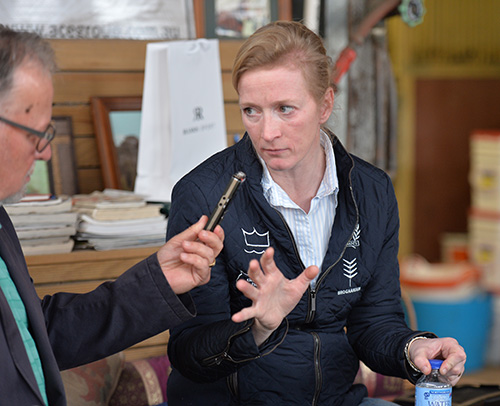
“If that has been Nathalie’s experience, I can’t prove her wrong, but horses were always for sale. There has always been money, if you look back, the late Reiner Klimke rode Entertainer, that was a top PSI Grand Prix horse, and wasn’t it later with an Italian rider?”
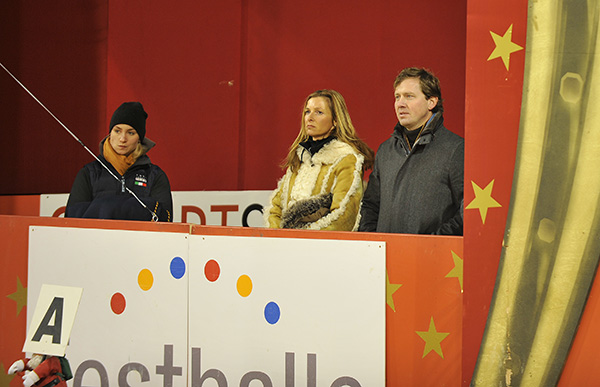
The Rothenberger parents, now assisting their children
I just interviewed Sven Rothenberger who bought Andiamo from Otto Hofer…”
And before that the Doruto mare he bought from Bert Rutten, Bo. When Sven started his career, and it was a bit the same with his wife Gonnelien, they purchased horses, we don’t know how much they paid, for sure they were expensive. They were top horses,
Andiamo for example was third at the World Cup Finals, so I don’t think it is that new.”
“The heart, that’s something I’m thinking more about, if there are more emotional aspects in the whole dressage business, I don’t know.”
It wasn’t so much business was it, it was more the hobby of the gentry…
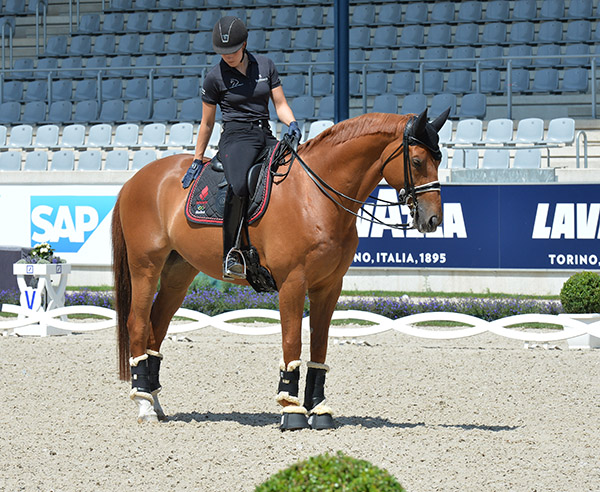
Cathrine Dufour and her first star, Cassidy, seeing the Aachen arena for the first time…
“Dressage was always a sport for wealthy people, very wealthy people, stinking rich people, so to speak. What was the last Cinderella story that we had? Maybe Helen Langehagenberg coming from a non-horsey background, making her way to the top in Germany? Cathrine Dufour, and Charlotte Dujardin?”
“The most important question is the Olympic future for dressage or equestrian in general, and I can very much understand what Nathalie is fearing. The problem, or part of the problem, is that the public, or part of the public, hasn’t realized how much of a positive change the sport has been going through. It’s still not ideal, and we still see things in the warm up in dressage, or bits in showjumpers mouths at places I go, please never ask me to tack up this horse. Impossible, there is a bit here, a bit there, a shank, a chain, dozens of reins, attention not only to the bit, but also the nose band, or two nose bands that we see.”
“There are still some things we need to take a close look at, we as the media, as well as the FEI, all stake holders. We need to stay in the Olympic family with horses. In general we need to communicate better that this welfare of the horse is paramount is really more than just another sentence. As a journalist I am always a little bit sceptical when I hear that, it’s part of every press release. But in general, here we are at Aachen, and if you look at the warm-up area, twenty years ago what happened there in the morning that was just awful. Awful.”
It got so bad that they tried to shut us (journalists/photographers) out of it…
“Yes, and they were right. My other example, is look at three-day-eventing. Me, as an old man, I loved the long format, with the tracks, the racecourse, the horses trotting, but too many horses and too many people died.”
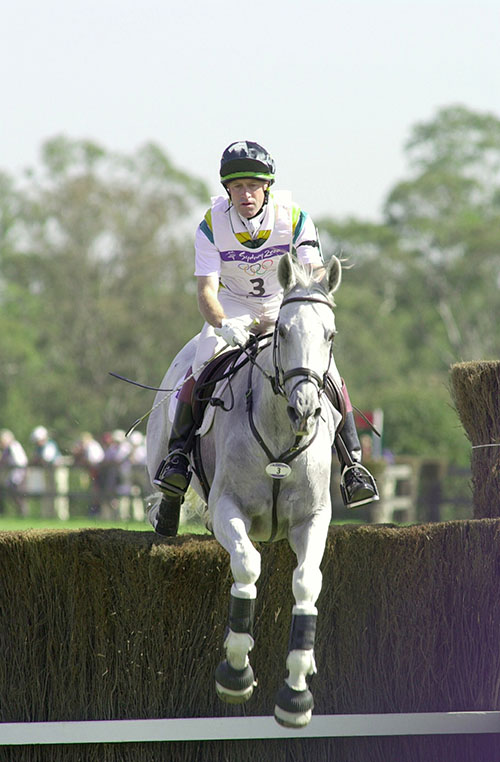
Back in 2000, Australia’s Andrew Hoy and Darien Powers, over one the steeplechase fences on the racecourse, on the long way to a medal in the eventing…
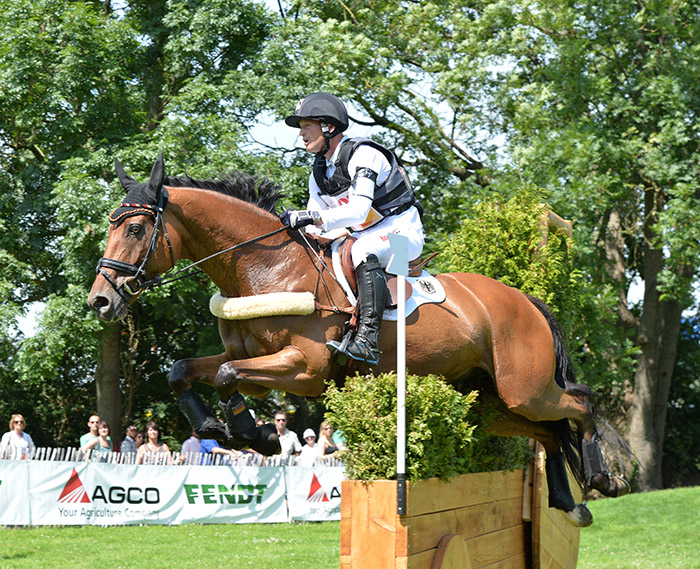
Michael Jung and his star, Sam, just the dressage, showjumping and the cross country course…
I think it is so nice here at Aachen with the eventing format, the horses come off the cross country with their ears pricked, looking comfortable, and it is still an interesting test…
“Yes it is, but this sport had come to a point where there had to be a change, a change was the only chance to stay, maybe even in the FEI. Yeah and it worked out.”
It was out of the Beijing Games, and it was Wayne Roycroft who saved it, who said, we can cut out this and this, and he bore a lot of criticism for that…
“And now what wonderful sports persons we have. Tom McEwen, I am not starting with the Germans, but Michael Jung and I am sitting here getting goose bumps thinking about them, Julia Krajewski, she’s a goddess to me. I knew Julia when she was a pony rider, and she was always good. Now she is also a trainer and a lot of these young guns who are here competing in the eventing, and doing so well, have been trained by her through the levels, she is a horseman, 120% and they have all learned it from her – she is so strict as a trainer, really strict and it is always horse first, and that’s why they produce so many good combinations. Yes, that’s Germany and I have more insights, but look at these marvelous British riders, Yasmin Ingham , it’s brilliant, you want to video tape it and say, ‘Look, this is how it is done’. Use some slow motion and you find nothing wrong, but everything nearly perfect.”
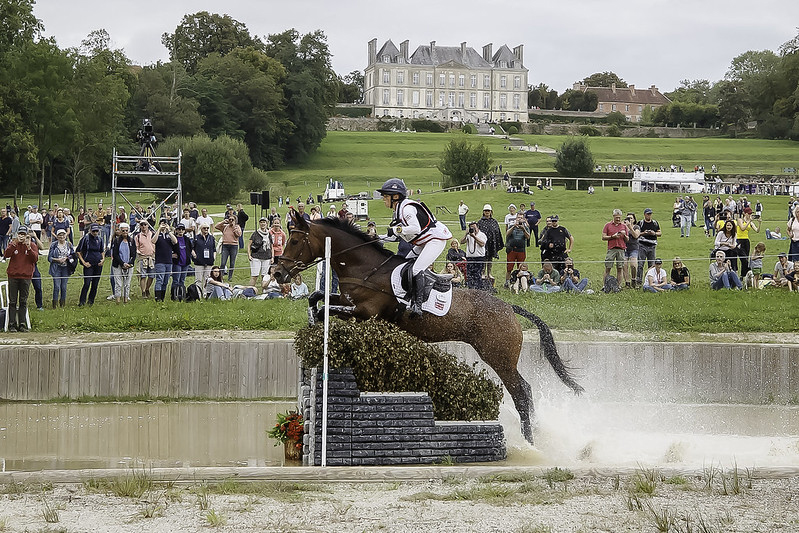
One of those starry British girls – Ros Canter and Lordships Graffalo (FEI photo)
Christopher Bartle has this amazing ability to get new stars going…
“He did it here, but look at the podium at Luhmühlen, all three of these British riders – Laura Collett, Kitty King, Yasmin Ingham were a picture perfect example of how it is to be done and how it is to be done fairly with happy athletes. The horses canter into the finish and they look, maybe not happy, but relaxed, they look comfortable with the situation, yes they are athletes, they are sweating, their heat rate is up, yes, yes, but they look good.”
It doesn’t help when one of the world’s leading dressage training establishments, Helgstrand Dressage, has rushed to court to prevent the publication of footage of their training..
“I see the both sides.”
If he’s got nothing to hide, why not let us look at it?
“Yes but we have rules. I try to get into the Danish rules, I can only look at our German rules, there they have rules against entering a property and that’s what happened in a way. It’s tricky, and up to now, we don’t know what is on the video, so we can only guess, and guess is not a good basis for judging finally. It will come out sooner or later, I think, and ask me again then, because then I can see what I can see, then I can comment on that.”
I don’t buy the sanctity of privacy, what cleaned up the dressage warm up arena, was people invading the riders privacy with their phones and filming what was happening, that had more power than any of the FEI resolutions…
“Yes but… judges always have this really big argument, we can only judge what we see. My point is if they could look more closely, look properly… you see so many things and it is a 7 or a 7.5, and you go no! Look we have a tail, we have a mouth, a poll, a back, just look.”
But we had that blissful period when Carl Hester and Charlotte Dujardin emerged, Helen Langehagenberg…
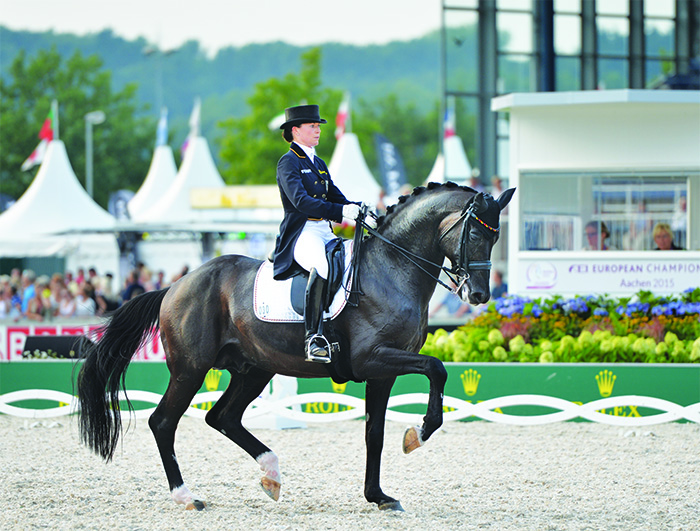
Kristina Sprehe and Desperados
“Tina Sprehe with Desperados…”
And the beautiful American girls that Debbie was bringing out of the United States…
“Then finally, it is Jessy and Benny (sister and brother, Jessica and Benjamin von Bredow), they are just brilliant.”
But now I see more and more swishing tails, mouths open, hollow backs, hindlegs out behind, and I see judges here at Aachen giving that top marks…
“Exactly, especially the hollow back and the high croups, that’s so simple to detect, you see it, the croup is high, the haunches are not lowered in what should be the most collected movements in the entire test, okay its rhythmically performed, it’s so to speak properly done, because it’s 13 steps more or less on the spot but with all the other points not taken into consideration. Sure it’s 13 steps on the spot, but the rest is bullshit, excuse my French. It’s a 6.5, and if a rider gets that score for that movement four times in a row, then he is out of contention at the big Nations’ Cups, a score of 70, 71 is not enough to be selected.”
“But as long as they get the high scores, the training at home won’t be changed. It’s speculation how they train, but if you see these piaffes that really travel to the left and to the right, that’s unbalanced, yes, and the judge can’t say, I bet this rider puts his horse in front of the wall and just beats him until he piaffes. Ask the trainers – if the horse travels from left to right, this might be one indication that the training is not properly done. Of course there are horses that are more gifted for this movement, but if we have unbalanced piaffes, and if we have high croups in every change, and even in the pirouettes no spring any more in the hindlegs but more or less just a turn on the haunches without having a real canter jump, or the characteristics of a canter jump in the hind leg – and then you get a 7.5. so why as a rider do you have to change it if you get a 7.5, that’s not fairly good, it’s close to good.”
Are we once again in the situation of not having anyone on the judging panel who is able to provide a lead, like Lette did, like Niggli did? Who can you look to? The other day, here at Aachen the only one I agreed with was always one out, the Danish judge…
“The question to me, is do we need one strong judge, or do we need a better communication, an honest communication between the stakeholders, riders, trainers, judges. Something like what they had in The Netherlands, the Global Forum, that was of course a commercial thing…”
And it became a way of foisting Dutch dressage on the rest of the world – why is Salinero the world’s happiest horse, was a question at one forum and they agreed he was!!! But the Forum itself was a good idea.
“That was a good idea and I see so many things we need to discuss, for example, some of the horses, including some of the German horses, start from X, from the halt, salute, in what I would say was a medium trot and not a collected trot. We see so many horses with no flexing and bending in each corner. I mean the classical dressage – next term to discuss – says every corner is a quarter of a small circle. It’s about getting the inner hind leg, getting proper control of the poll, give some rein, be even softer, using every corner for the self-carriage… but what we see, they would rather have it in a counter flexing, and that’s absolutely wrong.”
“And that’s also part of the movement. We have the extended trot and then the short side is also counting into the score for this movement, and if I see this and say, okay this is not collected, this is passagey, or stiff and tight, there is no bending, and I don’t see that in the scores.”
“If we have a non-emotional discussion, and that is back to your first question, if we have our Olympic future in mind, it’s no longer this judge hates this nation, this rider never gets scored by this judge, or this judge has trained with the father of this rider how can he judge, blah, blah. Yes maybe all this should be considered, but we are talking about bigger things here. We need to be working together to work out how we can preserve equestrian in the Olympic Games.”
I interviewed Bert Rutten last week and his argument was that dressage had become so professional, that we needed a professional corps of judges, who weren’t allowed to deal, to run clinics, who were selected and they would judge the Championships , and it wouldn’t be up to the shows to pick the judges that will give the results the show wants…
“Whew, to be honest that is too complex to answer immediately… actually, and I think they are probably going to kill me for saying this, in soccer, in football we have a video assistant, in other words AI is used. Especially in dressage – I’m not an expert in computers – I can very much imagine that you can feed an AI with 1000 piaffes, then you see, points like wither and croup, that’s something an AI can figure out, is the croup higher, lower, or even? The poll – is it up or the third vertebrae? Is the nose on or slightly in front of the vertical? It could also see, the hocks and the knee, is it even? Or how uneven, there’s no identically moving horse, we know that, but this could be, not that we want a computer to judge but we want a computer to assist.”
I think it would be lovely…
“Or the changes, so many people say, oh they were brilliant changes, but fifteen? And it was the fourth at X, there are so many things. And of course an AI could say, he did 15 changes, and of course if you had cameras at different angles, you could see some swinging, unbalanced moments. It could all maybe help to support dressage.”



In business, the phrase is “what we measure and publish/report gets managed.” In dressage, the results we get are based on judges marks. Until judges stop rewarding btv, hollow backs, tension, open mouths and high croups, riders won’t change what they present. Responsibility falls clearly on judging and it is failing.
And the abswer is sooooo simple! Just get out of that Competition of Silly Walks because you can never beat the money and nasty influence that keep the judges from judging correctly…..and start a True Dressage Competition on the side
Leave the Silly Walkers their audience that loooove swinging tails and left-to-right piaffes and knee-action an average Hackney would be jealous of
dont expect any big audience or big prizes but just do Dressage right (ah yes the Silly Walking can not be called Dressage anymore) and just let true riders with rightly trained horses in.
If any one asks – you just call it a niche market.
Only this way, slowly, out of the headlights but right into the true dressage – we may win correct riding back again….
Excellent interview! So good to hear and read such honest and open option from both of you. I think the “debate climate” is slowly becoming more and more outspoken. Things that earlier no-one dared to speak out or put on paper are now more common. And that is GOOD for the sport! But we must keep up the good pace we have now. Keep moving forward. It is yet long before all the beautiful words make a difference for REAL and in practice for the part in all this that have no voice – the horses. I heard a very interesting expression the other day: we must not just let all the talk about horse welfare land in become a “optical patch”. Once again – thanks Christopher and Jan!
Let’s not forget the horse cannot perform any of this when he is cracked at the poll, nose to neck radiating tension down his entire body. Dressage as a whole needs to change and that’s going to have to start with a judge who knows something. Who actually trains for how to perform these movements in a way that’s biomechanically correct for the horse. But that will only come when the horse truly comes first. I don’t see that happening any time soon. Imagine what beauty and harmony we would see if lightness and longevity were once again at the center of dressage.
I believe that dressage needs objective scoring. Till that is arranged, biases and other dark forces will be at play. It’s impossible to change to sport without change in the judging. Doesn’t matter the rules written in the rule book or guidelines if it is still a human giving scores. Changing it will force good practice, and will reward true horsemanship from fast learned tricks.
Good article, but Ai can’t judge sympathy or relaxation. It is not an entirely objective experience; if it were it would have no interest for anyone.
Thank you for this excellent article. Yes the problem is that dressage is so much showmanship and entertainment now. The discussion way back from one important dutch insider was how to pull the crowds in . They wanted to shorten the Grand Prix and take out all the” boring” bits like walk which are such great measures of relaxation . So here we are ; full of tense moments and spectacular extravagance. There should be 2 categories : classical and show. Thus the competition would be fair.
Het zou goed zijn het “gymnasium des pferdes” van Gusrav Steinbrecht te lezen en te bestuderen en niet het systeem van hoe leer ik een beer dansen.
Aaah yes the good old beating in front of a wall to get a piaffe, saw plenty of that, this was also a favorite measure just to collect the horse to start the days training. In the Late eighties early nineties I was going from trainer to trainer in Northern Europe in sad unending quest, yard to yard with my horses always finding chronic welfare issues and forced training. Horses strapped down in rollkeur on the lunge for thirty minutes before they were even ridden. Horses ridden as youngsters in a forced frame between spur whip and hands, horses that always ended up hollow backed, croup high and tense, over corrected, over worked, repetition repetition repetition. If it still had a functioning liver left it was almost certainly still on a series of steroid injections.
It wasn’t judges that so much put me off dressage but trainers, dealers, competitors which became all one and the same ugly thing. Only breeders at least for awhile were my escape to a reality that put the horse first but not even this was consistant. You can imagine Klimke was definitely my idol, there was a man that actually loved horses. Riding them gently through the deep dark lovely magnificent forests around his place there was a joy and sparkle in his and his horses eyes that was rare in competitive dressage.
The Dutch at any rate, the horse has always been for sale, that was a given so I don’t think much has changed just some catching up maybe for the rest. It’s always the same, the love of the horse comes second. For a mere handful of exceptions In that state dressage can be no other than a fantasy of sublime partnership and trust. We might have known it once, if lucky.
Those of us who have been saying, for the last 20+ years, that “The Emperor has no clothes” are relieved to hear our assessment validated by this well-known horseman, who is, unlike many who bear the name, deserving of it. His suggestion of incorporating AI merits serious consideration, because re-training most current international dressage judges’ eyes to correctly mark the individual movements is a necessary step toward eliminating the circus that competitive dressage has become. Imagine each judge with a personal video screen that displays a REAL, TRUE 9- or 10-scoring recorded piaffe, canter pirouette, extended trot, etc. that meets all the OLD FEI Rule book criteria, being played as that judge is observing, in real time, the competitor executing the same movement, from the same angle…so they can visually COMPARE the two and mark accordingly! The same technique could be required to certify or recertify dressage judges. Yes, they will balk and complain, but so what? SOMETHING’S GOT TO GIVE if we want dressage to survive as an Olympic sport. Otherwise PETA and the like will soon sound its death-knell.
In reality, after the retirement of our past champions in the Art of Dressage post 2004, and of course many of the excellent Judges and Coaches due to age, left dressage in a void. Spectators became now more qualified than the judges. The public lost interest and the breeders had to revert to what I call breeding ”French poodles’ – that is to say – horses that daintily picked up their front legs, aka carriage breeds, without any impulsion coming from behind in an attempt to return the interest. in dressage, and safeguard their livelihoods. The younger generation of spectators, not having seen or understood correct dressage movements, believe that this modern way is dressage, But in truth and reality, it is no more than variety entertainment. Of course, the big killer is always MONEY and today with frozen semen stallion owners have a world market available and reaping in huge amounts. I dare to suggest that traditional dressage has been destroyed like so many others by money. Of course, frozen semen do not represent a ‘service’ as claimed and are but a commodity which ought to be sold with a performance guarantee like every other commodity according to law in most countries. Talking about law, in most countries there are also anti-monopoly laws, which are intended to protect public interest. Now surely, the combination of the the 2 largest producers/sellers of frozen semen Helgstrand – Schockemohle International form a definite monopoly? And then to think that they sponsor events? I am just adding the last sentences to reflect how the EFI could be influenced and to illustrate where we have lost the plot so to say.
Naturally many will not agree to this, but may I suggest to take a look at what the various breeding associations select as their ultimate foals, mares, or stallions that they license. Their movements are vastly different to what we see in dressage today where in the piaffe, the hind legs are raised higher than those in the front – clearly illustrating that the horse is not collected. Or watch the rein back movement in grand Prix which just illustrates how poorly the horses are balanced today. Balance produces harmony and it is clear that in most cases today there is no suggestion of harmony in dressage visible, with very few exceptions. Breeding has improved enormously over the past years. This is partly due to the fact that Breeding Associations have opened their books to foreign breeds. Without question, the dressage horse of today is an outstanding athlete, but dressage is a discipline, but not of the horse but of the rider. Unfortunately few are willing to subject themselves to discipline. Imagine what ballet would look like when the dancers refuse to discipline? Ballet would become a sight for sore eyes or a good laugh as a variety show. I fully understand that my views will attract a huge amount of critic, but if we at least consider the above claims, it might produce to seed that will hopefully produce proper dressage in the future.